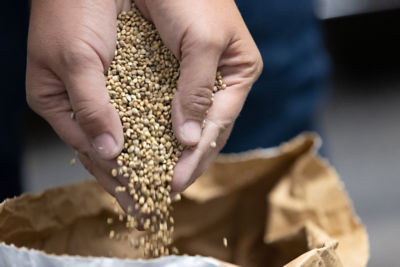Causal Agent
Cuscuta spp.
Distribution
Worldwide
Symptoms
More than one hundred Cuscuta spp. occur worldwide. Dodder is an annual parasitic plant that can be identified by slender, white, yellow or red, leafless strands that twine around the host plant. Dodder has no chlorophyll and depends on the host plant for its nutrition. As a result, infected plants appear weak and discolored. Growth and yield can be significantly reduced. Under heavy dodder infestations, small host plants may die. As the season progresses, dodder grows down a row to cover plants with a mass of vines. Heavily infested fields appear yellow.
 Cucumber plant heavily infested with dodder Cuscuta spp.
Cucumber plant heavily infested with dodder Cuscuta spp.
Conditions for Development
Dodder has a very wide host range and is adapted to a wide range of environments. After germination, the seedling depends on nutrients stored for its survival. If a suitable host is not found within a few days, it will die. Once a seedling makes contact with a host, it forms sucker-like projections (haustoria) that penetrate plant tissues. Dodder produces small, inconspicuous flowers (often white) that mature and produce two to four yellow to black seeds.
Irrigation water and cultivation equipment are common modes of long-distance dispersal. Dodder seeds are small and can remain viable in the soil for up to ten years. Seeds usually germinate in late winter and spring in cold climates, however, germination can continue through the summer. Environmental conditions that favor the growth of cucurbits are also beneficial to dodder.
Control
Immediately remove or burn dodder, along with infested plants upon detection. Contact herbicides can be used to control localized infestations. If an infestation is widespread, apply pre-emergence herbicides, deep-plow crop debris, and rotate to grasses.



